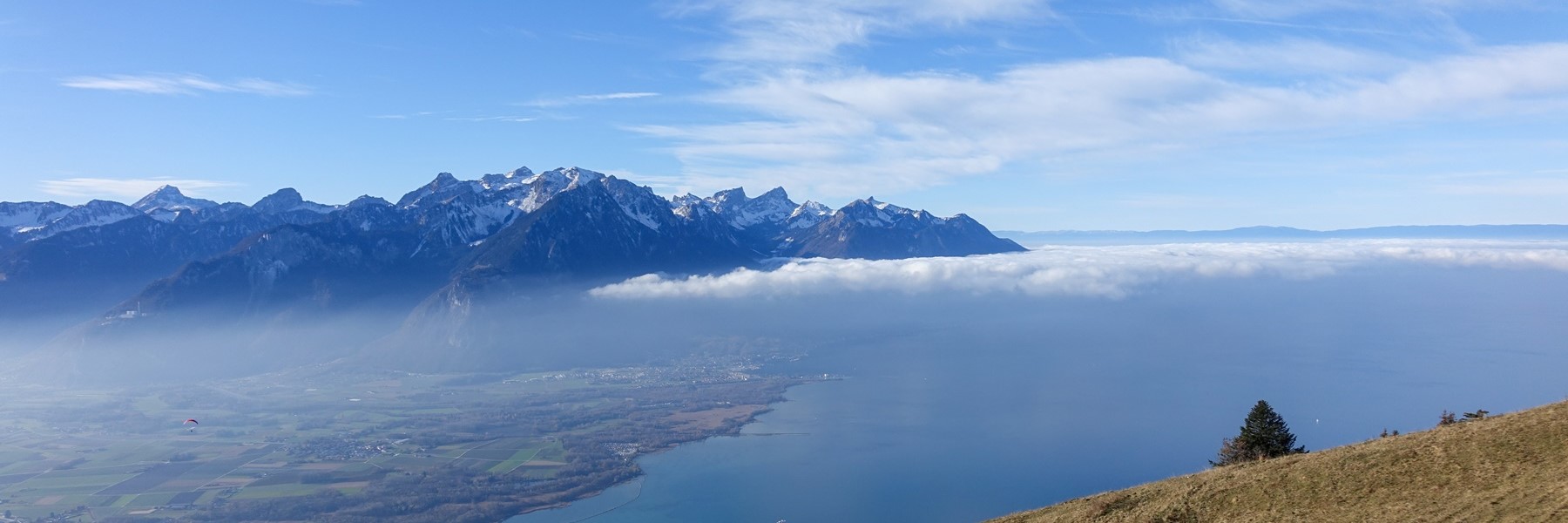
Le fond de la haute vallée de la Simme présente la caractéristique de beaucoup de vallées de montagne : un fond plat. Ce fond plat provient du fait que la vallée a été au cours du temps remplie par des alluvions. Ce n’est que lorsque l’on rejoint le fond du cirque fermant le fond de la vallée que le paysage change du tout au tout. On se trouve alors en face d’accident de terrain assez important. C’est par-dessus un de ces ressauts que se trouvent les cascades de la Simme (Simmefäll). Les cascades que nous connaissons actuellement sont le résultat d’aménagements effectués au 17ème siècle dont le but était de limiter l’importance des crues. C’est durant ces aménagements que la roche a été taillée afin d’offrir au torrent un passage différent de l’original.
Depuis le bout de la vallée, deux sentiers sont possibles. Mais il est avantageux de suivre celui qui longe la cascade au plus près. On subit alors des embruns assez forts par endroits. Plus haut, à la Barbarabrücke, on se fait copieusement asperger. Après le pont, on retrouve l’autre cheminement, qui suit alors un chemin carrossable assez raide par endroits. Après avoir rejoint une zone bien plus plate, on ne tarde pas d’atteindre la buvette d’alpage du Rezlisbärgli. Il vaut alors la peine d’aller voir les Sibe Brünne (les sept fontaines), où l’eau ressort directement de la paroi de rochers.
Après cet endroit, on poursuit encore un moment dans une cuvette relativement plate, avant de monter franchement en direction de Langermatte. Cet endroit, où se trouve également une buvette d’altitude, se trouve sur une croupe dominée par le Firstli, une raide arête qui était empruntée par une des variantes du Col du Rawyl.
Il suffit alors de descendre en direction de l’Iffigbach pour rejoindre l’Iffigenalp. La descente depuis Langermatte est raide par endroit, mais le sentier est bon, et on perd rapidement en hauteur. Iffigenalp se trouve à la croisée des sentiers menant d’une part au Rawylpass et d’autre part au Schnidejoch, autre alternative pour franchir la chaîne de montagne.
Itinéraire : Lenk (gare) – Simmefäll – Rezlisbärgli – Langermatte – Iffigenalp
Distance : 13,7Km
Dénivellation : 920m
Durée : 5h
Destination Montagne est le résultat de réflexions faites au début des années 90 qui a amené son fondateur, Charles Lehmann, a passer le Brevet d'Etat Français d'Accompagnateur en Montagne. Dès juillet 1996, Destination Montagne a commencé à proposer des randonnées et des trekkings, parfois en collaboration avec d'autres agences.
rue des Sorbiers 21
2300 La Chaux-de-Fonds
Suisse
Téléphone : +41 22 757 67 57
E-mail:frontdesk@destination-montagne.ch
Website:https://www.destination-montagne.ch
